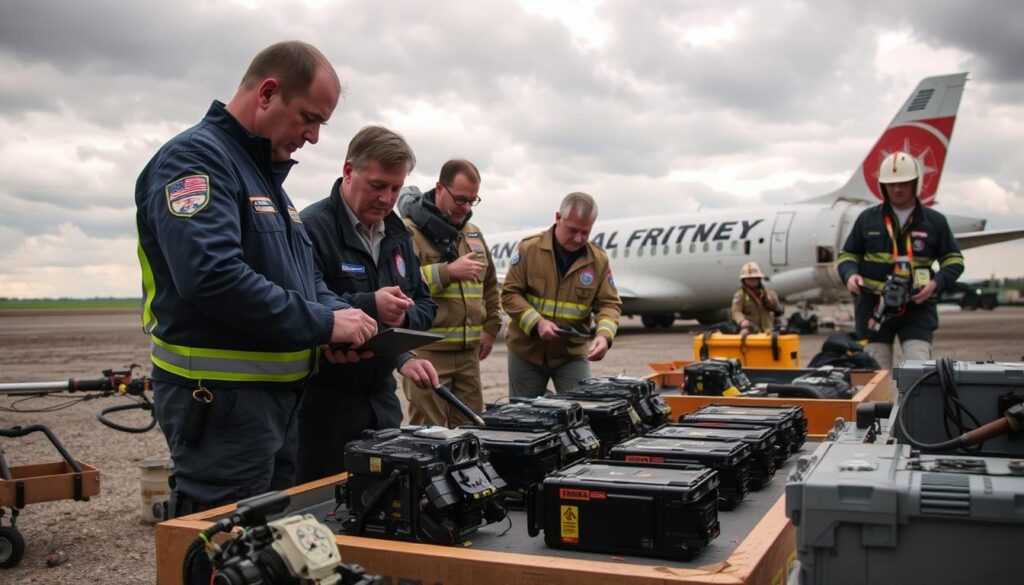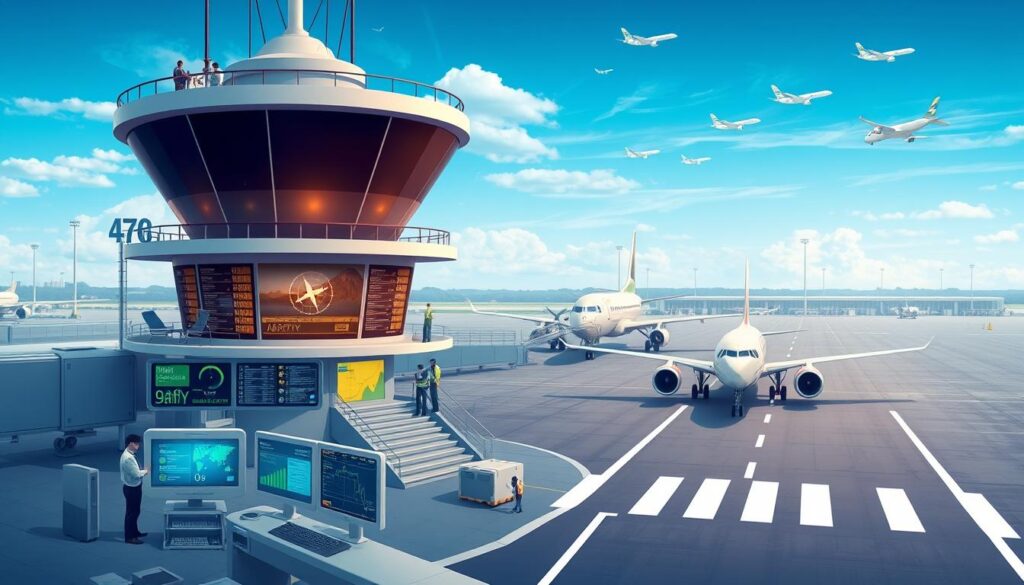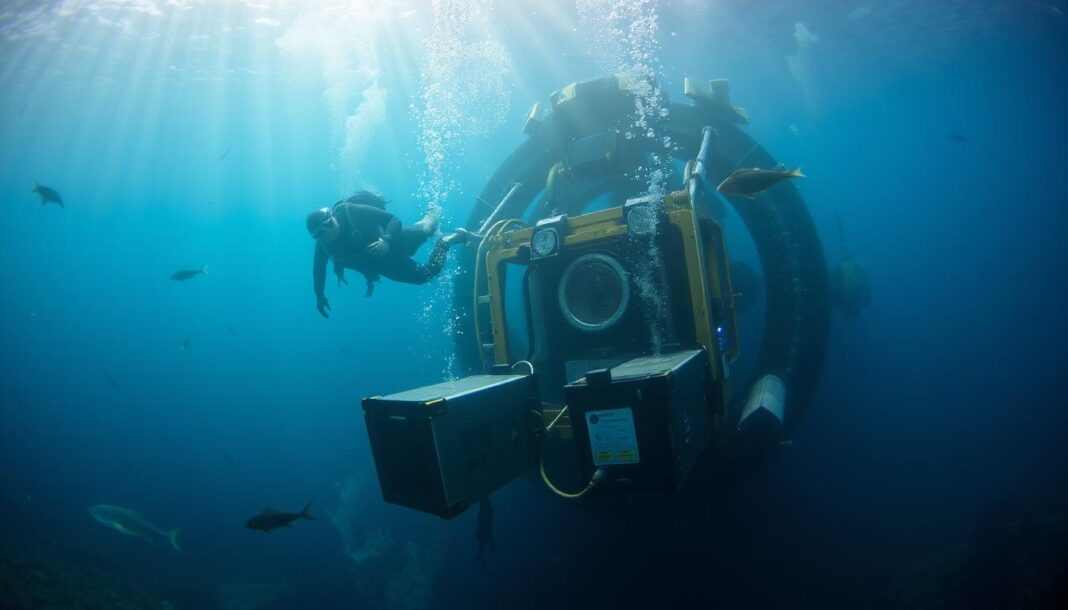“Safety doesn’t happen by accident.” These words by Julie S. Wastl are very true today. We’re all thinking about the recent tragedy in Washington, D.C., with an American Airlines flight. The crash was very sad and made us all wonder about flight safety.
Now, the DC plane crash investigators have found something important. They’ve recovered the American Airlines black boxes. These boxes are like silent witnesses that hold key information. They can help us understand what happened before the crash.
Knowing what the black boxes say is very important. It helps us learn about the last moments of the flight. It also helps us make flying safer for everyone in the future.
Key Takeaways
- The American Airlines flight involved in the crash has sparked investigations into aviation safety.
- Black boxes recovery is a vital aspect of understanding the events surrounding the crash.
- DC plane crash investigators are now analyzing the data from the recovered black boxes.
- Insights from the black boxes can help prevent future aviation tragedies.
- Community response highlights the deep impact such incidents have on families and the public.
Overview of the DC Plane Crash
The DC plane crash involving an American Airlines flight happened on a clear day. The weather was perfect for flying. This accident shocked the nation as it happened near the capital.
Over a hundred passengers were on the flight, each with their own story and destination. The aircraft was a modern model with advanced safety features. It was well-maintained and had the latest technology.
At the time of the crash, strict safety protocols were in place. These rules were designed to prevent disasters. Yet, this event shows the risks of air travel.
Experts and officials are now investigating the DC plane crash. They aim to find out what caused this tragedy. The lessons learned from this accident will help improve aviation safety in the future.
What Happened During the Midair Incident?
The tragic midair incident involved a series of critical events that ended in a devastating crash. Knowing the exact timeline of events helps us understand what led to this disaster. Eyewitness accounts are key, giving investigators a clear picture of what happened before the crash.
Timeline of Events Leading Up to the Crash
| Time | Event | Details |
|---|---|---|
| 2:15 PM | Flight Takeoff | American Airlines flight departs from the airport with a full passenger load. |
| 2:45 PM | Initial Communication | Air traffic control receives a routine check-in from the flight crew, reporting no issues. |
| 3:05 PM | Unusual Activity | Air traffic control detects erratic signals from the aircraft; pilots express concern over navigation. |
| 3:10 PM | Emergency Protocols Initiated | Flight crew attempts to regain control while communicating difficulties to air traffic control. |
| 3:12 PM | Final Communication | The last transmission from the flight crew indicates severe distress before contact is lost. |
Eyewitness Accounts and Reports
Eyewitnesses describe the chaotic moments before the midair incident. People near the flight path saw smoke behind the plane, causing panic.
- Some witnesses heard unusual noises before the descent.
- Others saw the plane flying too low, which alarmed them.
- Passengers on the flight felt dread as things got worse, sharing their last moments in the air.
Details on the American Airlines Flight
Learning about the American Airlines flight involved in the tragic incident is key. This part looks into the flight’s planned route and the aircraft’s details. It also covers important safety features. Knowing these helps us understand their role in flying.
The Flight Path and Schedule
The American Airlines flight was set to follow a usual path. It had many waypoints to guide it smoothly. Air traffic control watched it closely to keep everyone safe.
The flight’s start and end times were also important. They helped track the flight as it went along.
Aircraft Specifications and Safety Features
Looking at the aircraft, some aircraft specifications are very important. The model, age, and tech of the plane are key. They help the plane fly well.
Safety features are also critical. They work in emergencies. Things like navigation, alerts, and landing plans make flying safer. Knowing about these shows how much safety matters in flying.
DC Plane Crash Investigators Recover American Airlines Black Boxes After Midair
The crash involving American Airlines has shown how important black boxes are in aviation incidents. DC plane crash investigators are carefully going through the wreckage. Finding the black boxes is a key moment in the investigation.
Getting the black boxes is hard. The team faced tough weather and hard-to-reach places. They used advanced sonar and radar to find the devices.
The data in these black boxes is very important. It tells us about the plane’s performance and communications before the crash. The team is working hard to understand this data. Their findings will help us learn more about aviation safety.
| Aspect | Details |
|---|---|
| Type of Aircraft | American Airlines Airbus A320 |
| Date of Crash | [Insert Date of Crash] |
| Recovery Methods | Sonar, Ground-Penetrating Radar |
| Data Relevance | Flight Performance, Cockpit Communications |
| Next Steps | Data Analysis, Report Generation |
Importance of Black Box Recovery in Aviation
Recovering black boxes is key in modern aviation. They help solve mysteries of aircraft accidents. They play a big role in keeping flying safe and improving technology.
What Are Black Boxes? Understanding Flight Recorders
Black boxes, or flight recorders, are vital in planes. They have two main parts: the cockpit voice recorder (CVR) and the flight data recorder (FDR). The CVR records sounds from the cockpit, like pilot talks. The FDR logs flight data, like altitude and speed.
These devices are made to last, even in tough conditions. They keep important info safe after an accident.
The Role of Black Boxes in Accident Investigations
Flight recorder checks are very important in accident investigations. They help investigators understand what happened before a crash. This info helps find problems and make new safety rules.
Black boxes are the main source of info for these investigations. They help make flying safer for everyone.
Role of the National Transportation Safety Board (NTSB)
The National Transportation Safety Board is key in aviation incident aftermaths. It’s an independent U.S. government agency. The NTSB finds the probable cause of accidents and suggests ways to improve safety.
When a crash happens, the NTSB starts an investigation quickly. They use a team of experts from different fields.
The NTSB works with local authorities and airlines to collect data. They follow strict protocols to examine all incident factors. This includes looking at flight data, witness statements, and the aircraft’s condition before the accident.
The NTSB is dedicated to making aviation safer. They look at the incident and the bigger safety trends in aviation. Their discoveries often lead to new rules or changes to prevent future accidents.

The NTSB also holds public hearings to share their findings and suggestions. These meetings are open to everyone. They help build trust in aviation safety by encouraging teamwork and responsibility.
“The NTSB investigation is not just about understanding what happened, but ensuring it never happens again.”
In short, the National Transportation Safety Board is essential for aviation safety. They conduct detailed investigations and work to improve safety.
Aircraft Data Retrieval Techniques Used by Investigators
After an aviation incident, investigators use many methods to get vital data. They focus on aircraft data retrieval techniques. These strategies help them gather information quickly and accurately.
Seismic and Acoustic Detection Methods
Seismic detection uses ground vibrations to find the crash site and measure impact force. Investigators use special sensors to catch seismic waves from the impact. This gives clues about the aircraft’s last movements before hitting the ground.
Acoustic monitoring is also key. It listens for sounds from the crash site, like signals from black boxes. These black boxes send signals to help find them. Together, these methods help find the wreckage’s exact location.
The Process of Analyzing Data from Black Boxes
After finding the black boxes, the analysis starts. This needs advanced tools and expert skills to understand the data. The flight data recorder tracks things like altitude, speed, and direction. The cockpit voice recorder records the pilots’ conversations.
This process is very detailed. Each piece of data is carefully checked for any unusual signs or causes of the incident. Knowing how to use these techniques helps investigators understand what happened before the crash.
| Technique | Description | Purpose |
|---|---|---|
| Seismic Detection | Utilizes sensors to capture ground vibrations caused by the impact | Helps locate the crash site and understand impact scenarios |
| Acoustic Monitoring | Records sounds to detect signals emitted by black boxes | Aids in the recovery of black boxes |
| Black Box Analysis | Deciphers flight data and cockpit conversations | Identifies anomalies or contributing factors to the crash |
Aviation Accident Analysis: What Can We Learn?
Aviation accident analysis is key to understanding midair incidents. It helps spot patterns and improve safety. Learning from incidents honors those who lost their lives and makes flying safer for all.
Accident analysis reveals human error, equipment failures, and weather as common causes. These factors can mix in complex ways. This makes aviation safety a challenging field to improve.
Every incident offers insights into risks and weaknesses. Making changes based on these analyses can lower accident risks. Here are some key areas for improvement:
- Enhanced pilot training protocols
- Advancements in aircraft technology
- Strengthened maintenance procedures
- Improved communication processes among crew members
- Increased awareness of weather conditions
The aim of aviation accident analysis is to keep improving safety. By learning from incidents, the aviation world can create better safety measures. These steps make flying safer for everyone, ensuring it remains a reliable mode of transport.
| Key Focus Areas | Importance |
|---|---|
| Pilot Training | Increases reaction capability in emergencies. |
| Aviation Technology | Reduces likelihood of mechanical failures. |
| Maintenance Procedures | Ensures aircraft remain in optimal condition. |
| Communication Processes | Enhances teamwork and situational awareness. |
| Weather Awareness | Minimizes risks associated with turbulent conditions. |
Aviation Safety Protocols: Preventing Future Accidents
Aviation safety protocols are key to preventing accidents. Airlines and airports must follow these rules to keep passengers safe. Federal regulations guide these protocols, setting the standards for safe flying.
When accidents happen, safety rules get updated. The Federal Aviation Administration (FAA) leads this effort. They use lessons from past accidents to improve safety.
Everyone in aviation must follow these rules. This includes pilots and maintenance teams. They all play a part in keeping flying safe.
Effective safety protocols include:
- Regular training for personnel on emergency procedures
- Comprehensive maintenance checks of aircraft
- Implementation of safety management systems that assess risk
- Investigation protocols that emphasize learning from past errors
International cooperation also boosts safety. Aviation agencies worldwide share safety ideas. This shows a global commitment to keeping passengers safe.

Keeping aviation safe is a team effort. Everyone in the industry must focus on safety. This way, we can avoid future accidents.
Community Response and Mourning
The tragic event has deeply affected the community, leaving a lasting impact. Families and friends of the victims are facing their grief head-on. The community’s support shows the power of coming together in hard times.
Impact on Families and Friends of the Victims
The tragedy has touched the lives of many, causing a deep sense of loss. People are dealing with strong emotions, feeling isolated in their grief. It’s important to know that your feelings are valid and shared by others. Getting involved in community efforts can help in the healing process.
Public Grief and Support Initiatives
After the loss, many support initiatives have started. These include community gatherings, memorial services, and counseling sessions. They provide a space for people to mourn together and find support.
These efforts help build connections and encourage people to share their stories. This promotes a sense of unity in the community.
The table below highlights some key public support initiatives launched in response to the tragedy:
| Support Initiative | Description | Date Launched |
|---|---|---|
| Community Vigil | A public gathering for remembrance and support, allowing individuals to share stories and honor the victims. | Two days after the incident |
| Counseling Services | Free counseling sessions offered to families and friends to help them process their grief. | Ongoing from the event |
| Memorial Fund | An initiative to raise funds for the victims’ families and support local services affected by the tragedy. | One week after the incident |
Looking Ahead: Implications for Future Aviation Safety
The recent DC plane crash is a stark reminder of the need for constant vigilance in aviation safety. As investigations continue, experts predict significant changes in rules and practices to boost safety. These updates will be vital in shaping the future of aviation safety.
Changes in Regulations and Procedures
Following this tragic event, safety guidelines and protocols might see a major overhaul. Changes in regulations could include more rigorous maintenance checks, better pilot training, and enhanced communication systems. Airlines and aviation authorities will collaborate to set up clear guidelines. This will help ensure a safer travel experience for everyone.
Advancements in Aviation Technology
Technological advancements are also set to improve aviation safety. Advancements in technology will change how flights operate. For instance, new avionics, real-time data monitoring, and artificial intelligence could make flights more reliable. These technologies can enhance awareness and speed up decision-making in emergencies.
The aviation industry’s growth will always prioritize safety. Ongoing discussions among industry leaders about effective strategies will lead to safer skies for all.
Conclusion
The recent DC plane crash involving American Airlines shows how important aviation safety is. Looking into this tragic event and finding the black boxes teaches us a lot. These lessons can help make air travel safer in the future.
Investigations by groups like the National Transportation Safety Board are key. They help us understand what went wrong and how to avoid it. This knowledge is vital for keeping flights safe.
This tragedy has big implications for aviation safety. Thanks to new tech and rules, the industry keeps getting better. Knowing about these changes helps us understand how they make flying safer.
Keeping safety at the top of aviation’s priorities is essential. By learning from this crash, we can reduce risks. This way, flying can stay one of the safest ways to travel.
Let’s all work together for safer skies. By supporting improvements and a safety-first culture, we can make flying even safer.


